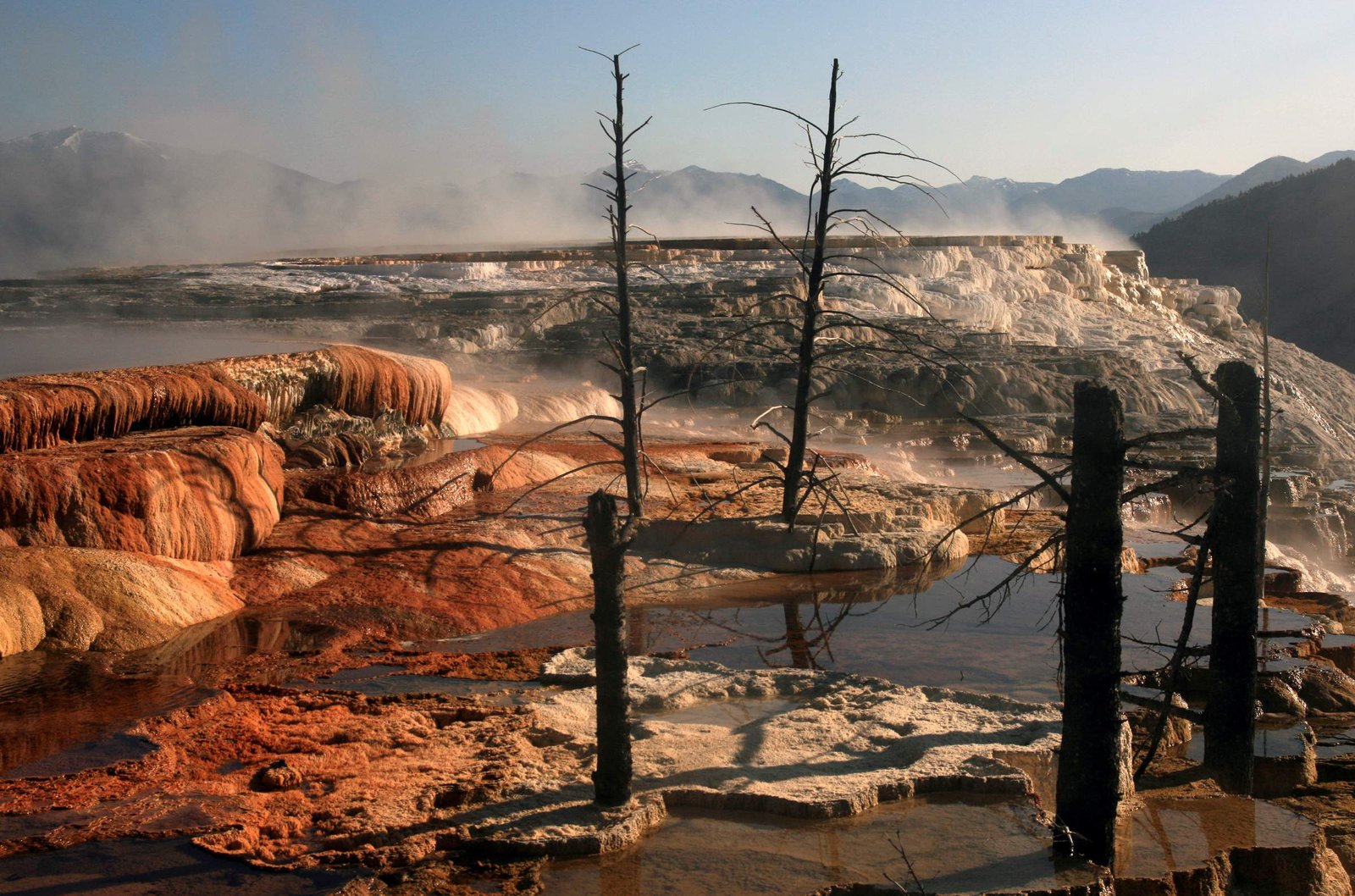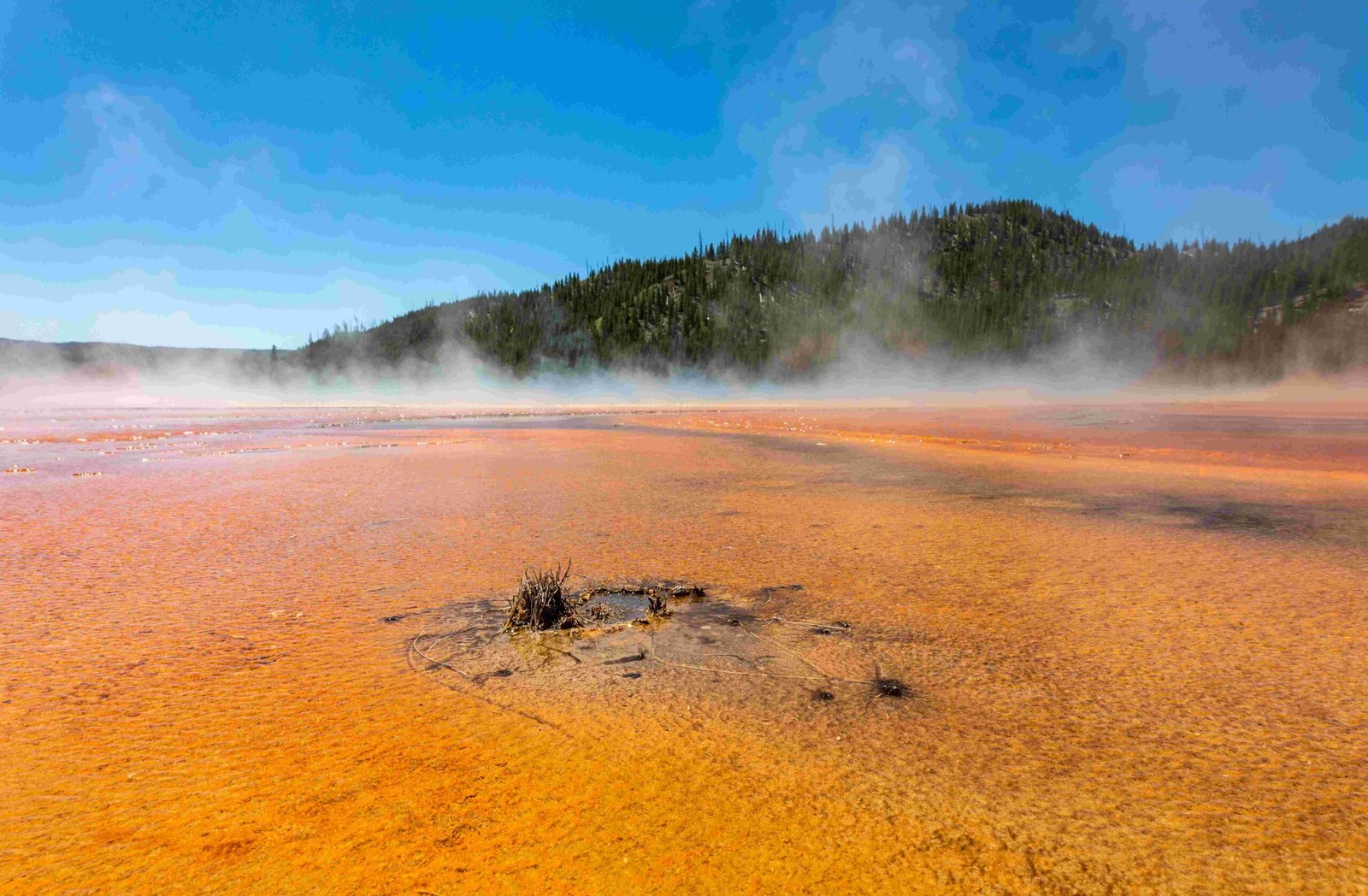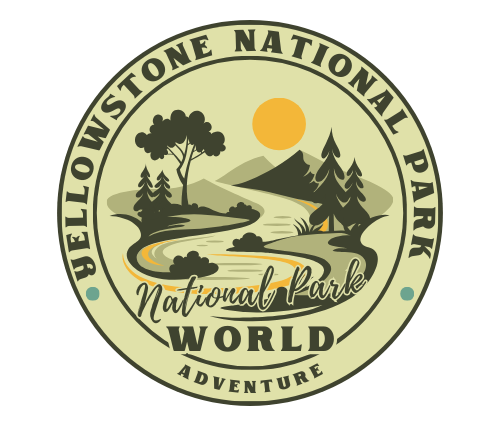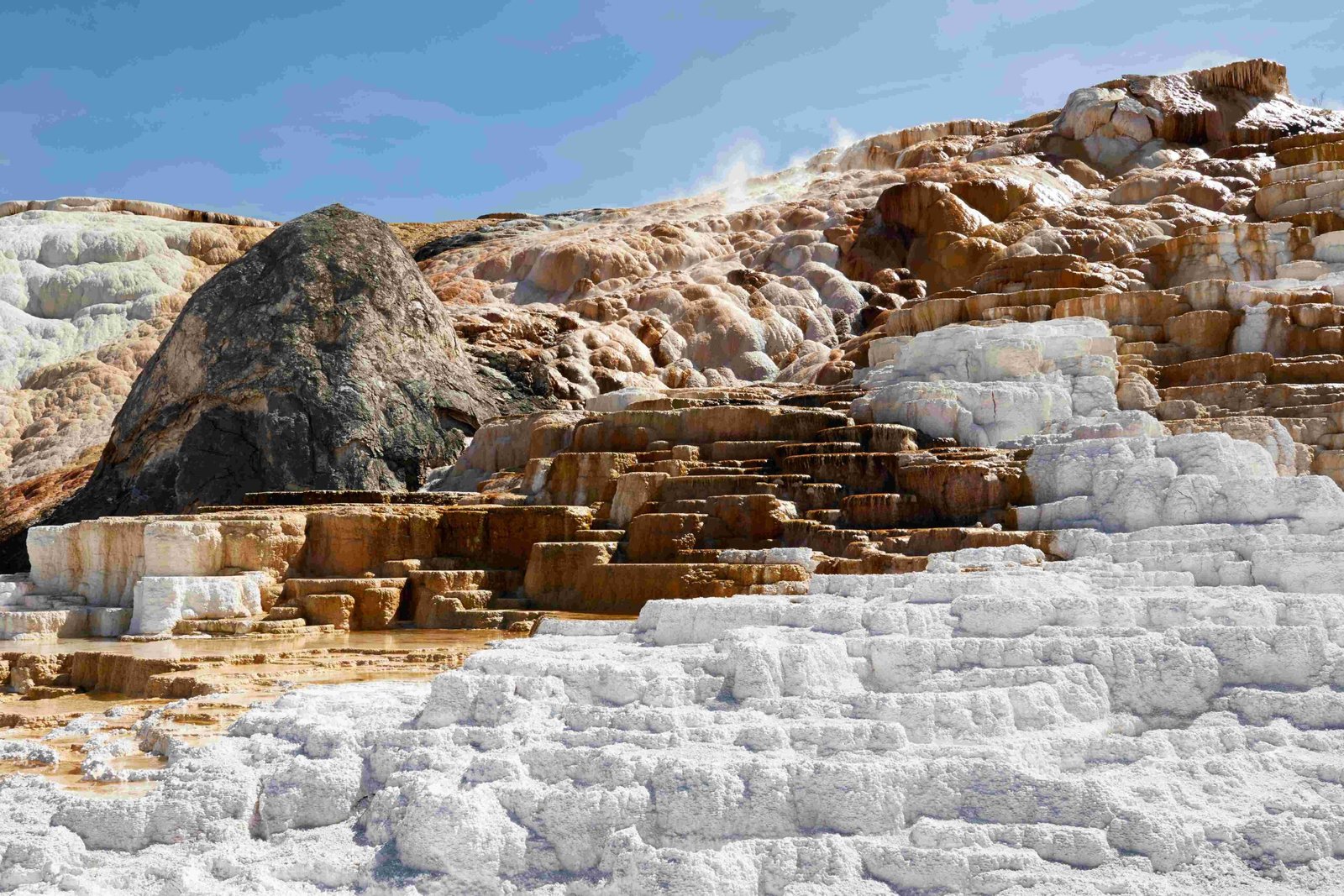The Boiling River Hot Springs in Yellowstone National Park is a unique natural wonder where hot spring water mixes with the cold Gardner River, creating a perfect natural hot tub. Located near Mammoth Hot Springs, this hidden gem offers visitors a rare opportunity to soak in thermal waters within the park’s boundaries. Despite its name, the river doesn’t actually boil, but provides a comfortable bathing experience when conditions allow.
What is the Current Status of Boiling River Hot Springs?

As of the latest updates, the Boiling River area is currently closed due to significant damage caused by the 2022 floods. This closure has impacted access to this popular spot, and there is no definite reopening date announced. When operational, the area typically faces seasonal closures due to high water levels from spring snowmelt.
Where is Boiling River Hot Springs Located?

The Boiling River Hot Springs is situated in the northern part of Yellowstone National Park, just south of the 45th Parallel sign and north of the Montana-Wyoming border. Its proximity to Mammoth Hot Springs makes it a convenient stop for visitors exploring this area of the park.
How Do You Access Boiling River Hot Springs?
When open, accessing Boiling River Hot Springs involves a short hike:
- Park at the designated small parking area near the trailhead
- Follow the flat dirt path along the west bank of the Gardner River
- Walk approximately 0.5 miles (about 10 minutes) to reach the soaking area
The total round-trip distance is about 1.25 miles, making it an easy trek for most visitors.
What Are the Unique Features of Boiling River Hot Springs?
Boiling River Hot Springs offers a one-of-a-kind experience due to its natural thermal features:
- Temperature Gradient: The river presents a fascinating temperature range. The right side (facing downstream) contains frigid water, while the left side is almost scalding hot.
- Perfect Soaking Spot: The ideal bathing temperature is found in the center of the left half of the river, where hot spring water mixes with the cold river water.
- Natural Hot Tub: Large rocks have been arranged to create pools where visitors can soak and enjoy the thermal waters.
What Are the Best Times to Visit Boiling River Hot Springs?
When operational, the best times to visit Boiling River Hot Springs are:
| Season | Accessibility | Notes |
|---|---|---|
| Late Summer | Open | Ideal conditions, lower water levels |
| Fall | Open | Comfortable temperatures, beautiful scenery |
| Winter | Open | Unique experience, be prepared for cold air temperatures |
| Spring | Closed | High water levels, unsafe conditions |
| Early Summer | Closed | High water levels, area typically inaccessible |
What Facilities Are Available at Boiling River Hot Springs?
The amenities at Boiling River Hot Springs are minimal, reflecting its natural setting:
- Small parking area near the trailhead
- Primitive bathroom (vault toilet) at the parking area
- No changing rooms or lockers available
Visitors should come prepared with appropriate swimwear and towels.
What Safety Guidelines Should Visitors Follow?
To ensure a safe and enjoyable experience, visitors should adhere to the following guidelines:
- Wear appropriate swimwear (required)
- Do not drink or eat in the river
- No pets allowed in the area
- Alcohol consumption is prohibited
- Be cautious of wildlife and maintain safe distances
- Stay away from hydrothermal features outside of designated soaking areas
- Be aware of fast-moving water and slippery rocks
How Does the Closure Impact Yellowstone’s Thermal Features?
The closure of Boiling River Hot Springs due to flood damage has:
- Reduced accessible thermal features for visitors
- Impacted the local ecosystem
- Necessitated assessment and potential restoration efforts by park authorities
This situation highlights the dynamic nature of Yellowstone’s geothermal landscape and the need for conservation efforts.
What Alternative Hot Springs Can Visitors Enjoy in Yellowstone?
While Boiling River Hot Springs remains closed, visitors can explore other thermal features in Yellowstone:
- Mammoth Hot Springs
- Old Faithful Geyser Basin
- Norris Geyser Basin
- Grand Prismatic Spring
These areas offer spectacular views of geothermal activity, though soaking is not permitted.
How Does Boiling River Hot Springs Contribute to Yellowstone’s Ecosystem?
Boiling River Hot Springs plays a crucial role in Yellowstone’s unique ecosystem:
- Supports thermophilic organisms
- Creates microhabitats for specialized plants and animals
- Contributes to the park’s overall geothermal system
Understanding these contributions helps visitors appreciate the importance of preserving such natural wonders.
By exploring the Boiling River Hot Springs, visitors gain a deeper appreciation for Yellowstone’s geothermal wonders and the delicate balance of its ecosystem. While currently inaccessible, this natural hot spring remains an integral part of the park’s allure, promising future enjoyment when conditions allow for its reopening.

